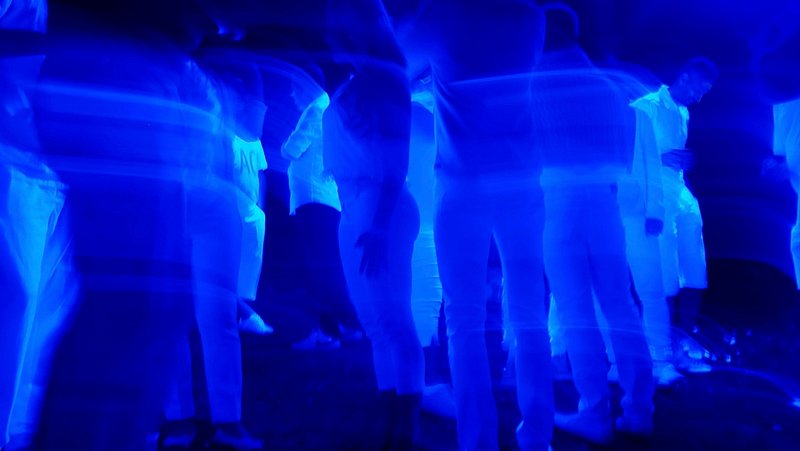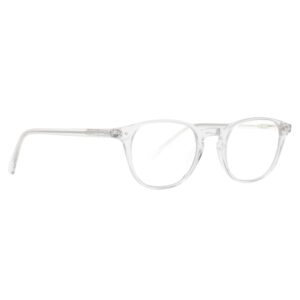
Key Takeaways
- Blue light therapy and blue light supplements are being explored as potential treatments for chronic migraines.
- Understanding how blue light affects the brain can help migraine sufferers make informed decisions about their treatment options.
- Blue light has both positive and negative effects on migraines, and knowing when and how to use it is crucial.
- Selecting the right type of blue light supplement involves evaluating quality, effectiveness, and proper dosage.
- Combining blue light strategies with lifestyle changes may enhance migraine management.
Exploring Blue Light Supplements for Migraine Relief

“Uv Light Images | Free Photos, PNG …” from www.rawpixel.com and used with no modifications.
Imagine having a tool that could potentially ease the throbbing pain of your migraines. That’s the promise of blue light therapy and supplements, an innovative approach that has gained attention in the migraine community. But what exactly are blue light supplements, and how do they compare to blue light therapy? Let’s dive into the science and see how these treatments could offer a ray of hope for chronic migraine sufferers.
What Are Blue Light Supplements?

Blue light supplements are a form of light therapy that you can take orally. They contain compounds that can influence the body’s response to light, even without direct exposure to blue wavelengths. These supplements are a newer concept compared to traditional blue light therapy, which involves exposure to light that mimics natural sunlight.
Most importantly, blue light plays a significant role in regulating our circadian rhythms—our body’s natural clock. It affects various biological functions, including sleep patterns, mood, and yes, potentially even migraines. Because of this, the idea of harnessing blue light’s power through supplements is an attractive one for those looking for more natural, non-invasive treatment options.
Understanding Migraines and Blue Light

Before we delve deeper into the world of blue light supplements, it’s crucial to understand what a migraine is and how light, in general, affects it. A migraine is not just a bad headache; it’s a complex neurological condition that can cause severe head pain, sensitivity to light and sound, nausea, and even visual disturbances known as auras.
For many migraine sufferers, light can be a trigger, with blue light being particularly bothersome. This is because blue light has a high energy frequency that can be strenuous to the eyes and brain. But here’s where it gets interesting: while blue light can exacerbate migraine symptoms, it can also provide benefits when used correctly.
How Blue Light Affects Migraines

“Sunlight | There is a muscular energy …” from www.flickr.com and used with no modifications.
The relationship between blue light and migraines is a double-edged sword. On one side, exposure to excessive blue light, especially from screens, can lead to digital eye strain and trigger migraines. On the other, controlled exposure to natural blue light, primarily from the sun, can help regulate circadian rhythms and improve mood and sleep—factors that can potentially reduce the frequency and severity of migraines.
The Science Behind Blue Light and Head Pain

“Woman Sleeping · Free Stock Photo” from www.pexels.com and used with no modifications.
Research has shown that blue light can impact the levels of melatonin, a hormone that regulates sleep. Poor sleep is a well-known trigger for migraines, so managing light exposure is essential. Additionally, blue light affects serotonin levels, which can influence migraine pain. Understanding these biological effects is key to harnessing blue light for relief.
Now, let’s consider blue light therapy, where individuals are exposed to light that mimics the blue wavelengths found in natural sunlight. This therapy has been used to treat various conditions, including Seasonal Affective Disorder (SAD) and sleep disorders, which share common ground with migraine triggers. Therefore, the therapeutic use of blue light could potentially extend to migraine management as well.
Blue Light: Friend or Foe for Migraine Sufferers?
So, is blue light a friend or foe? The answer is not straightforward. While some migraineurs find that blue light exposure can trigger attacks, others report that certain wavelengths, particularly green light, may actually reduce migraine pain. It’s a complex interplay that requires careful consideration and often, personalized strategies.
Because of this, if you’re considering blue light therapy or supplements, it’s essential to monitor your body’s responses closely. Keeping a migraine diary can help you track the effects of blue light exposure and supplement use on your migraine patterns.
Blue Light Supplements: A New Horizon in Migraine Management
The exploration of blue light supplements is like navigating uncharted waters in the vast ocean of migraine treatments. These supplements aim to provide the benefits of blue light without direct exposure, which could be a game-changer for those sensitive to light during migraine attacks.
The Role of Blue Light in Circadian Rhythms
Our internal clock, the circadian rhythm, is deeply influenced by the cycle of natural light and darkness. Blue light, especially from the morning sun, signals to our body that it’s time to wake up, boosting alertness and resetting our biological clocks. This is vital because disruptions in circadian rhythms have been linked to the onset of migraines.
Natural Sources vs. Supplemental Forms
While natural sunlight is the best source of blue light, it’s not always accessible or practical for everyone, especially during winter months or for those with indoor lifestyles. This is where blue light supplements come into play, offering a convenient alternative. But remember, these supplements are not a direct substitute for natural light; they are an adjunct that can complement light-based therapies.
Choosing the Right Blue Light Supplement
Selecting a blue light supplement is not as simple as picking a bottle off the shelf. With the supplement market being largely unregulated, it’s crucial to do your homework to find products that are safe and effective.
Evaluating Supplement Quality and Effectiveness
When it comes to supplements, quality is king. Look for products that have undergone third-party testing and have certifications for purity. Read labels carefully and research the ingredients to ensure they are backed by science and free from unnecessary fillers.
Dosage and Timing for Optimal Benefits

The timing of taking blue light supplements can be just as important as the dosage. Because they are designed to impact circadian rhythms, taking them at the wrong time could potentially disrupt your sleep-wake cycle. Consult with a healthcare professional to determine the best schedule that aligns with your lifestyle and migraine patterns.
Now, let’s look at personal stories and what the research says. Hearing from others who have walked this path can be incredibly insightful, and the scientific evidence can guide us towards making informed decisions.
Personal Experiences and Clinical Studies
Personal anecdotes and clinical studies often provide a window into the real-world effectiveness of treatments like blue light supplements.
Real-Life Success Stories
Take Sarah, for example, a chronic migraine sufferer who found that blue light supplements helped reduce the frequency of her migraines. She noticed an improvement in her sleep quality and overall well-being after incorporating the supplements into her routine, alongside her prescribed migraine medication.
What Research Says About Blue Light Supplements

“Science itself is not an authority …” from www.thebvnewspaper.com and used with no modifications.
While personal stories are compelling, it’s essential to balance them with scientific research. Studies on blue light supplements are still in the early stages, but some research suggests potential benefits for migraine prevention and reduction of symptoms. However, more extensive clinical trials are needed to establish definitive conclusions.
Avoiding Common Pitfalls When Using Supplements
Supplements can be a valuable tool, but they’re not without their pitfalls. Understanding how to use them safely and effectively is paramount.
Addressing Safety and Side Effects
Always start with the lowest recommended dose of any supplement and observe how your body reacts. Be on the lookout for any side effects, and if you experience any adverse reactions, discontinue use immediately and consult your healthcare provider.
As we consider integrating blue light strategies into migraine management, it’s essential to remain vigilant about the quality of supplements, the timing of their intake, and the need for ongoing research. By staying informed and cautious, chronic migraine sufferers can find new ways to mitigate their pain and improve their quality of life.
Interactions with Medications and Other Treatments
It’s essential to consider how blue light supplements might interact with your current medications or other migraine treatments. Some supplements can have contraindications or interact with medications, potentially diminishing their effectiveness or causing adverse effects. Therefore, before adding any new supplement to your regimen, it’s critical to consult with your healthcare provider.
FAQ
- Are blue light supplements safe for everyone?
- How quickly can I expect relief from using blue light supplements?
- Can I use blue light supplements alongside other migraine treatments?
- Where can I buy reputable blue light supplements?
- Are there any lifestyle changes I should consider while taking blue light supplements?
Now, let’s address some frequently asked questions that you might have about blue light supplements and therapy.
Each person’s migraine triggers and responses to treatment are unique, so what works for one person might not work for another. Because of this, it’s important to approach blue light therapy and supplements with an open mind and a bit of caution.
Finally, remember that while supplements and light therapy can be part of your migraine management strategy, they should not replace treatments prescribed by your healthcare provider. Instead, they can be used in conjunction with a comprehensive treatment plan tailored to your specific needs.
Are blue light supplements safe for everyone?
Blue light supplements are generally considered safe for most people when used as directed. However, they may not be suitable for everyone, especially those with certain health conditions or who are taking specific medications. It’s crucial to talk to your doctor before starting any new supplement to ensure it’s appropriate for your health situation.
How quickly can I expect relief from using blue light supplements?
Relief from migraines using blue light supplements can vary greatly among individuals. Some may notice improvements within a few weeks, while for others, it may take longer to see any changes. Patience and consistency are key, as well as maintaining a dialogue with your healthcare provider to monitor progress.
Can I use blue light supplements alongside other migraine treatments?
Yes, blue light supplements can often be used in conjunction with other migraine treatments, but this should be done under the guidance of a healthcare professional. They can help you integrate these supplements into your existing treatment plan in a way that’s safe and effective.
Where can I buy reputable blue light supplements?
Reputable blue light supplements can be found at health food stores, pharmacies, and online retailers. Look for products that have been tested for quality and purity, and choose brands that provide transparent information about their ingredients and manufacturing processes.
Are there any lifestyle changes I should consider while taking blue light supplements?

“Stress Management | Image Source: idiva …” from www.flickr.com and used with no modifications.
When taking blue light supplements, consider lifestyle changes that support overall migraine management. These may include maintaining a regular sleep schedule, managing stress, staying hydrated, eating a balanced diet, and minimizing exposure to artificial blue light from screens, especially before bedtime.


